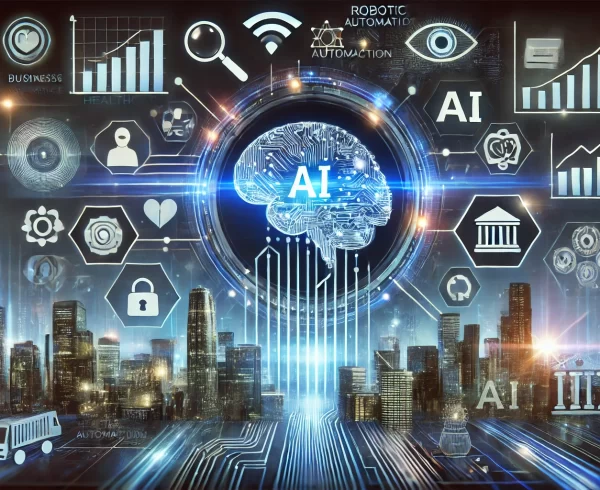The intersection of Artificial Intelligence (AI) and law enforcement is ushering in a new era of efficiency, accuracy, and proactive crime prevention. Police services worldwide are recognizing the potential of AI to revolutionize their operations, from predictive policing to enhanced investigations. In this blog post, we explore the myriad ways in which the AI sector can collaborate with police services to drive positive transformation in every possible aspect.
1. Predictive Policing: AI algorithms analyze vast amounts of historical crime data to identify patterns, hotspots, and trends. This allows law enforcement agencies to allocate resources strategically, focusing their efforts on areas with higher likelihoods of criminal activities. The result is a more proactive approach to crime prevention and a reduction in overall crime rates.
2. Behavioral Analysis: AI-powered behavioral analysis can help identify individuals who might pose a threat to public safety. By analyzing social media posts, online activities, and other digital footprints, law enforcement can assess potential risks and take preventive actions.
3. Real-time Surveillance and Monitoring: AI-driven surveillance systems equipped with facial recognition and anomaly detection can provide real-time alerts to law enforcement when unusual activities are detected. This aids in rapid response to emergencies, tracking suspects, and enhancing public safety in crowded areas.
4. Investigative Support: AI can assist investigators by rapidly sifting through vast amounts of evidence, such as video footage and documents. This accelerates the process of identifying suspects, linking evidence, and solving cases more efficiently.
5. Natural Language Processing (NLP): NLP-powered tools can analyze text data from various sources, including witness statements and social media, to extract relevant information and insights. This aids in understanding public sentiment, identifying potential threats, and gathering critical intelligence.
6. Automated Data Analysis: AI can process and analyze large datasets that would be challenging for humans to manage efficiently. This can include analyzing call logs, criminal records, and other relevant information, leading to quicker and more accurate decision-making.
7. Virtual Assistants: AI-powered virtual assistants can help police departments manage administrative tasks, allowing officers to focus on core responsibilities. These assistants can handle tasks like scheduling, answering queries, and providing information to the public.
8. Enhanced Emergency Responses: AI-enabled dispatch systems can optimize emergency response times by considering factors such as location, traffic, and available resources. This ensures that the nearest and most appropriate units are dispatched promptly.
9. Smart Crime Analysis: AI algorithms can analyze complex data sets to identify correlations between seemingly unrelated incidents. This aids investigators in uncovering hidden connections and patterns that might not be apparent through traditional methods.
10. Ethical Considerations: As AI is integrated into police services, it’s crucial to address ethical concerns related to privacy, bias, and fairness. Collaborations between AI experts and law enforcement agencies can ensure that AI systems are developed and deployed responsibly, mitigating potential pitfalls.
In conclusion, the AI sector has the potential to reshape the landscape of police services by bringing innovation, efficiency, and enhanced safety. From predictive policing and real-time surveillance to advanced investigations and automated data analysis, the possibilities are vast. However, it’s essential for police services to approach AI integration thoughtfully, considering ethical implications and ensuring transparency in their operations.
As AI technology continues to evolve, collaboration between the AI sector and law enforcement will be paramount. Through ongoing partnerships, research, and development, we can harness the power of AI to build safer communities, enable swifter justice, and foster a future where law enforcement agencies leverage cutting-edge technology to fulfill their mission effectively. The synergy between AI and policing holds the promise of creating a safer and more secure society for all.






